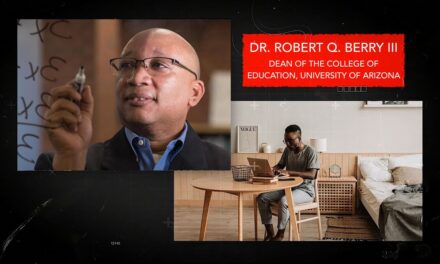By Aaron Allen,
The Seattle Medium
For the past twenty-five years, funding cuts to music programs in public schools have been on the rise, as school boards and superintendents often cite economic strains as a justification for the cuts, relegating music and the arts to after-school or enrichment programs.
Looking at the music education funding landscape, we can see that music education budget cuts disproportionately impact school districts that serve students of color, immigrant students, and low-income communities. According to the most recent federal data, a majority of students in the U.S. have access to music education as part of their school day. The approximately 7,000 schools without music programs are predominantly in school districts that serve Black, immigrant, and low-income student populations.
Studies have shown that quality general music education has been linked to the development of self-control, planning, verbal intelligence, and enhanced math and science skills. According to the Every Student Succeeds Act (ESSA), music is an essential component of a well-rounded education. However, school districts have been aggressively pushing STEM – Science, Technology, Engineering, and Mathematics – programs in preparing students for the workforce of the future, while many advocates for the arts believe that schools need to have a STEAM curriculum – Science, Technology, Engineering, Arts, and Mathematics – that cultivates students who are more in tune with the arts.
“I believe music should be a mandatory class in schools,” says Thaddeus Turner, co-founder of Totem Star, a music program that provides positive identity development and career training opportunities within the music industry. “Music and art are always an elective; it’s not part of mandatory learning. When people walk up to me and say, ‘I wish I could do what you are doing,’ and nothing is stopping one from doing this, but it is not easy to do, like getting up and playing in front of people, practicing, learning songs.”
“It [playing music] looks like it’s fun; it looks easy, so how could it be educational?” added Turner. “How could it be science? How could it be math? Well, it is all of that. You have to count; you’ve got to learn music theory, read and calculate. It is a language all unto itself.”
Daniel Pak, who transitioned from a metallurgical engineering background to becoming a music teacher, firmly believes in the correlation between music and its influence on learning.
“Music is not just about notes and lyrics; it goes so much farther beyond that,” says Pak. “When you can appreciate that holistic approach to learning, I think the future is brighter for anyone who loves the culture of learning.”
Thaddeus Turner agrees and believes that exposure to the arts is vital to the overall development and success of young people. According to Turner, music is a “multiplexed universe that ingulfs everything all at once,” including science, core chemistry, intonation, writing, and score writing.
“I think basically music is a great tool in achieving in academia,” says Turner. “It can teach students history, social justice. It can teach and strengthen math skills, math equations, all kinds of STEM-based fundamentals.”
“There are definitely aspects of music that can correlate to math and science,” says Pak. “Of course, at its most basic unit music is the function of time, volume, amplitude, and frequency of sound, when you talk about hertz range. So, for young people who are really invested in music to become their best songwriter selves, it is very much valuable for them to learn about frequency, amplitude, timing, fractions of time, whether it’s quarter notes, half notes, whole notes, sixteenth notes, how everything works together in a holistic manner.”
While STEM initiatives are a vital start in exploring the four disciplines, advocates for a well-rounded education experience believe that the critical process of creativity and innovation, teamwork, and camaraderie is missing. Students in STEM programs may have opportunities for experimental learning to excel, but these advocates believe that the success of students in the real world also requires the application of creation, teamwork, team building, and ingenuity.
“The most important thing that I have realized because of the way we live nowadays is that they have taken the teamwork out of learning,” says Turner. “There are no more bands. I remember being in high school, and we had band class. As much as the culture today promotes solo artistry, as a band, we were stronger together and as a unit.”
The STEM to STEAM movement has been taking root as a positive action to meet the needs of a 21st-century economy. Parents, educators, and employers have voiced that STEM alone is missing key components critical for children to thrive in the present and rapidly approaching future.
“We have used data like the Arts Survey, and it shows that students who take music and art as a part of their curriculum are way more successful in their core classes,” says Pak. “There is a higher graduation rate, higher rates of getting into college, and those who do not receive music or art because of cuts in school funding perhaps do not perform as well.”
The article STEM vs. STEAM: Advocating For The Return Of Art And Music In School Curriculums was originally published by The Seattle Medium.
The post STEM vs. STEAM: advocating for the return of art and music in school curriculums appeared first on AFRO American Newspapers .










